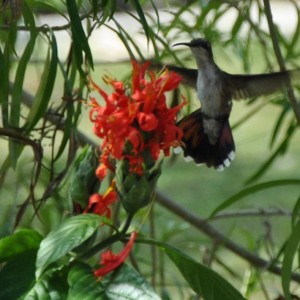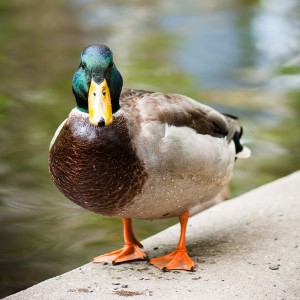We’re very happy to announce yet another new author for Bird Canada!
Cindy Boucher is a naturalist and herbalist, with a soft spot for birds, bears and permaculture. When not behind her camera, trying to capture the latest subject, you’ll find her deep in research on a myriad of topics. Her ongoing project is developing the “Avian Ritz” for insectivorous birds so they’ll consider her Cork, New Brunswick home a frequent, feathered friend destination.
They flew in one day, and with a turn of their wings they were gone.
The insectivorous birds had stumbled upon “The Ol’ Cork” in hopes that a new 5 star avian resort had developed during their snow bird vacation. To their disappointment, the “Ol’ Cork” scored barely a 3. So, with a slow sigh and a shake of their heads, the disappointed travelers had no choice but to move on to greener pastures.
That night , the owners vowed to develop their environment to become insectivorous friendly. One may wonder why they’d bother, when by simply placing a few feeders they could invite various other bird species to the area. You see, these owners had a vision of building a symbiotic relationship with these feathered friends. The birds would have a habitat that they would frequent and the owners would be thrilled with their feasting on mosquitos, slugs and black flies. Add to the fact of the enjoyment that goes along with watching the unique flying patterns of, for example, the swifts and swallow and it was clear it was a match made in heaven. Sounds great, but how is this accomplished?
Well, keeping in mind that different bird species have their own idea of what meets their needs as a suitable habitat, it is very possible to develop a property to meet the needs of many, rather than a few, of these incredible creatures. The list below are some of the features that may attract insectivorous birds to your area:
– feeders for the smaller birds
– cavities for the swallows and swifts
– meadows which attract insects
– suet balls which contain meal worms
– taller structures for the species that require good visuals
– eliminate the use of insecticides and herbicides
– provide nest boxes
– open wooded areas
– growing fruit and seed bearing plants
As you see, there’s a bit of planning when designing a natural habitat for insectivorous birds or any other species you wish to invite to your backyard. Start with one option and build on it from there. Over time you will have a property which has evolved into a beautiful bird sanctuary.




